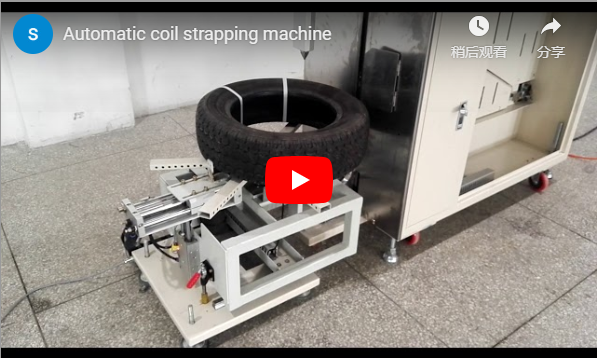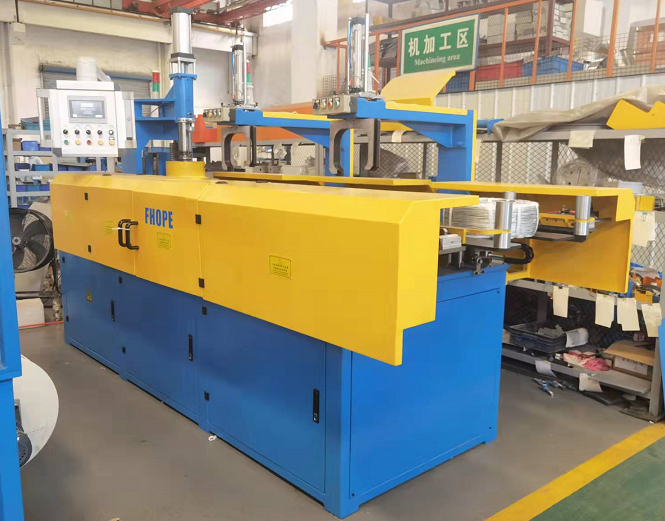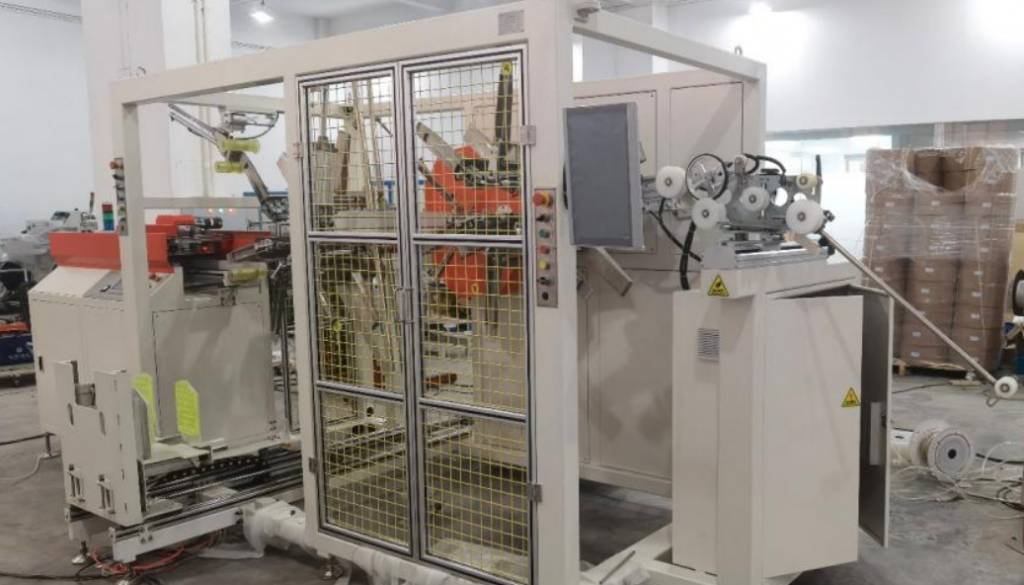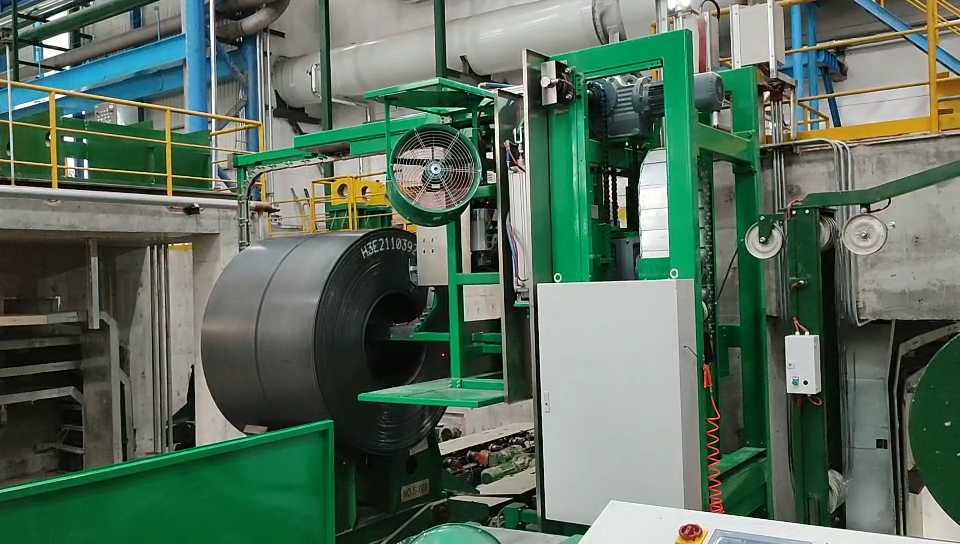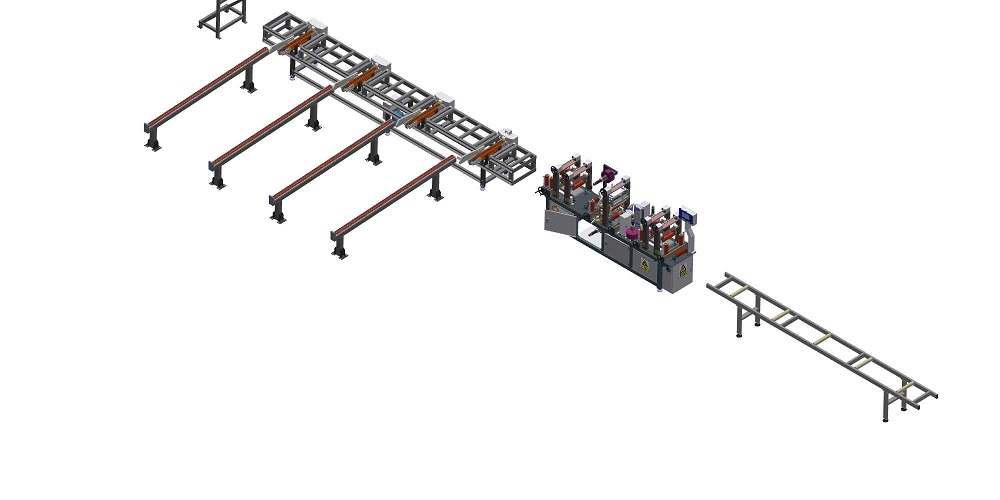Enhancing Efficiency and Protection: The Automated Aluminum Profile Packaging Line
The global demand for aluminum extrusions continues to rise, driven by sectors such as construction, automotive, and consumer goods. However, ensuring the quality and integrity of these profiles from the extrusion press to the end-user presents significant logistical challenges. Traditional manual packaging methods often fall short, leading to inefficiencies, potential product damage, and workplace safety concerns. This article delves into the technical specifications, operational benefits, and strategic advantages of implementing an automated aluminum profile packaging line, a solution increasingly critical for manufacturers and distributors aiming for operational excellence.
The High Cost of Manual Packaging in Metal Distribution
Manual packaging of aluminum profiles, while seemingly straightforward, introduces several operational bottlenecks and risks:
- Labor Intensity & Cost: The process is time-consuming, requiring significant manpower, contributing directly to higher operational expenses. Repetitive tasks also lead to worker fatigue and potential ergonomic injuries, impacting insurance premiums and productivity. Industry benchmarks often highlight manual labor as a primary cost driver in warehouse operations.
- Inconsistent Quality: Achieving uniform wrapping tension and precise tape/film application manually is challenging. This inconsistency can lead to inadequate protection against scratches, abrasions, and environmental factors during handling and transit. Research in logistics consistently points to improper packaging as a major contributor to product damage claims.
- Material Waste: Manual cutting and application of protective films and tapes often result in excessive material usage compared to precisely controlled automated systems.
- Throughput Limitations: Manual processes inherently limit packaging speed, creating bottlenecks that can throttle overall production output and delay order fulfillment.
- Safety Hazards: Handling long, potentially sharp-edged aluminum profiles poses cutting and lifting hazards for workers, necessitating stringent safety protocols that can further slow down operations.
The Automated Solution: Streamlining Aluminum Profile Packaging
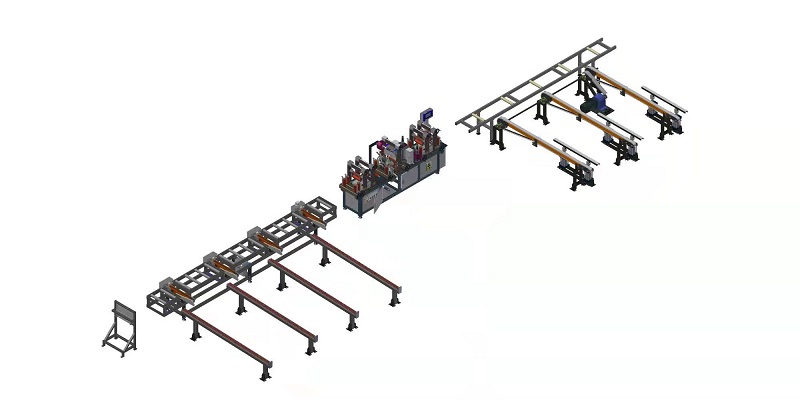
Automated packaging lines address these challenges head-on by integrating multiple processes into a seamless, efficient workflow. Based on advancements documented in packaging technology patents and industrial automation research, these systems offer significant improvements.
System Design and Core Components
A typical automated aluminum profile packaging line comprises several integrated modules:
- Infeed & Handling System: Automated profile storage, lifting, and transfer mechanisms ensure a continuous and orderly flow of profiles into the packaging station, minimizing manual handling.
- Profile Taping/Wrapping Machine: This core unit utilizes technologies like orbital wrapping to apply protective film or tape consistently around the profile bundle. Key performance indicators include:
- Wrapping Speed: Capable of processing 10-12 profiles per minute or more, depending on profile length and wrapping specifications.
- Material Compatibility: Designed for various protective films (e.g., PE, LDPE, stretch film) with thicknesses typically ranging from 0.05mm to 1.0mm+.
- Precision Control: Ensures consistent overlap and tension, optimizing material usage and protective quality.
- Profile Bagging Machine: Automatically inserts the wrapped profile or bundle into a pre-formed or continuously fed polybag.
- Sealing & Cutting: Applies a secure seal (e.g., heat sealing) to the bag and cuts it to the appropriate length.
- Outfeed & Stacking System: Conveys the finished package to a buffer zone or automatic unloading table for stacking, palletizing, or direct transfer to shipping areas.
- Control System: Typically utilizes a Programmable Logic Controller (PLC) with a Human-Machine Interface (HMI) touch screen for ease of operation, parameter adjustment (profile dimensions, wrapping settings), and diagnostics.
Technical Specifications Example
While customizable, typical specifications align with industry needs:
- Profile Length: 1000mm – 7000mm
- Profile Width: 30mm – 200mm
- Profile Height: 30mm – 250mm
- Max Profile Weight: Up to 12kg (or higher based on design)
- Wrapping Speed: 10-12 profiles/minute (variable)
- Film Thickness: ≥ 0.05mm - 1.0mm+
- Control System: PLC with Touch Screen HMI
- Power Supply: 380V/50Hz (adaptable)
- Construction: Heavy-duty steel frame (e.g., Q235) for durability
Tangible Benefits and Strategic Advantages
Implementing an automated packaging line delivers measurable improvements across multiple operational facets:
- Increased Throughput: Dramatically boosts packaging speed compared to manual methods, aligning packaging capacity with extrusion output.
- Reduced Labor Costs: Frees up personnel from repetitive, low-value tasks, allowing reallocation to more complex roles. ROI calculations often show payback periods within 1-3 years based on labor savings alone.
- Enhanced Product Protection: Consistent, high-quality wrapping minimizes transit damage, reducing returns and improving customer satisfaction. Studies in materials handling frequently correlate automated wrapping with lower damage rates.
- Improved Workplace Safety: Eliminates direct manual handling of potentially sharp profiles during the wrapping process, significantly reducing injury risks and associated costs.
- Optimized Material Usage: Precise automated control over film/tape application minimizes waste, contributing to cost savings and sustainability goals.
- Space Efficiency: Integrated lines often require less floor space than sprawling manual packaging stations and associated staging areas.
- Process Consistency: Automation ensures every package meets the same quality standard, vital for brand reputation and meeting customer specifications.
Integration and Future-Proofing
Modern automated packaging lines are designed for integration. They can interface with upstream systems (like extrusion runout tables and cooling beds) and downstream logistics (automated guided vehicles (AGVs), palletizers, warehouse management systems (WMS)). Many systems offer data logging and connectivity features, aligning with Industry 4.0 principles for enhanced process monitoring and optimization.
Conclusion: A Necessary Investment for Competitive Advantage
For aluminum profile manufacturers and distributors, particularly those operating in competitive markets, investing in automated packaging technology is shifting from a luxury to a necessity. The demonstrable gains in efficiency, cost reduction, product quality, and worker safety provide a strong competitive edge. By addressing the inherent limitations of manual processes, these automated lines streamline operations from end-to-end, ensuring profiles reach customers in optimal condition while bolstering the bottom line.
Contact Us for a Consultation
Ready to explore how an automated aluminum profile packaging line can revolutionize your operations? Contact our specialists today to discuss your specific requirements and receive a customized proposal. Let us demonstrate how this technology can enhance your efficiency, reduce costs, and improve product protection.
Frequently Asked Questions (FAQs)
-
How does automation improve safety compared to manual wrapping?
By automating the handling, wrapping, and bagging process, the system minimizes direct human contact with potentially sharp or heavy profiles, drastically reducing the risk of cuts, strains, and other manual handling injuries. -
Is the packaging line adaptable to different profile shapes and sizes?
Yes, these systems are designed for flexibility. Parameters like profile dimensions (length, width, height), wrapping tension, and bag length can typically be adjusted via the PLC/HMI to accommodate a wide range of extrusion products within the machine's specified limits. Customization beyond standard ranges is often possible. -
What is the typical throughput increase we can expect?
While dependent on profile size and complexity, automated lines processing 10-12 profiles per minute can represent a 2x, 3x, or even greater increase in throughput compared to typical manual packaging rates, significantly reducing production bottlenecks. -
What kind of protective films can be used with this machine?
The machines are generally compatible with various standard packaging films, including Polyethylene (PE), LDPE, and stretch films. Compatibility with specific film types, thicknesses, or specialized films (e.g., VCI for corrosion inhibition) should be confirmed based on the machine's design. -
What is the estimated Return on Investment (ROI) for such a system?
ROI depends on factors like current labor costs, material savings, throughput increase, and reduction in damage claims. However, many manufacturers report payback periods between 18 months and 3 years due to significant savings in labor, material, and improved efficiency. A detailed ROI analysis can be provided based on your specific operational data. -
What level of maintenance is required?
Like any industrial machinery, regular preventive maintenance (lubrication, inspection of wear parts, sensor checks) is required. Most systems are designed for reliability with user-friendly access for routine maintenance. Service contracts and spare parts availability are typically offered by the supplier.

